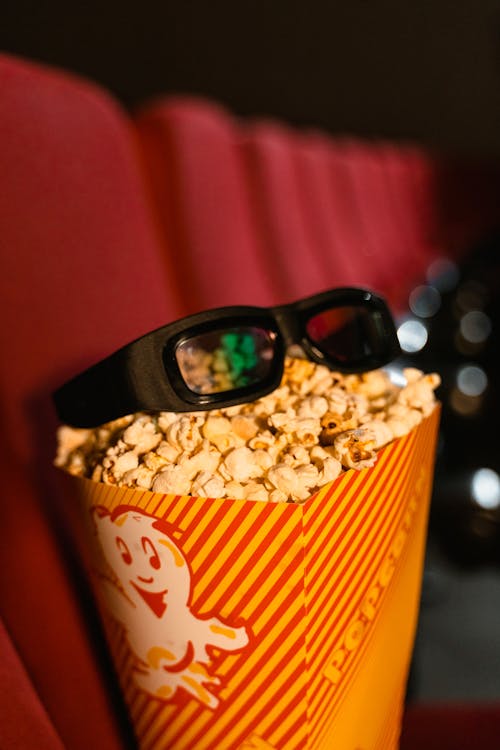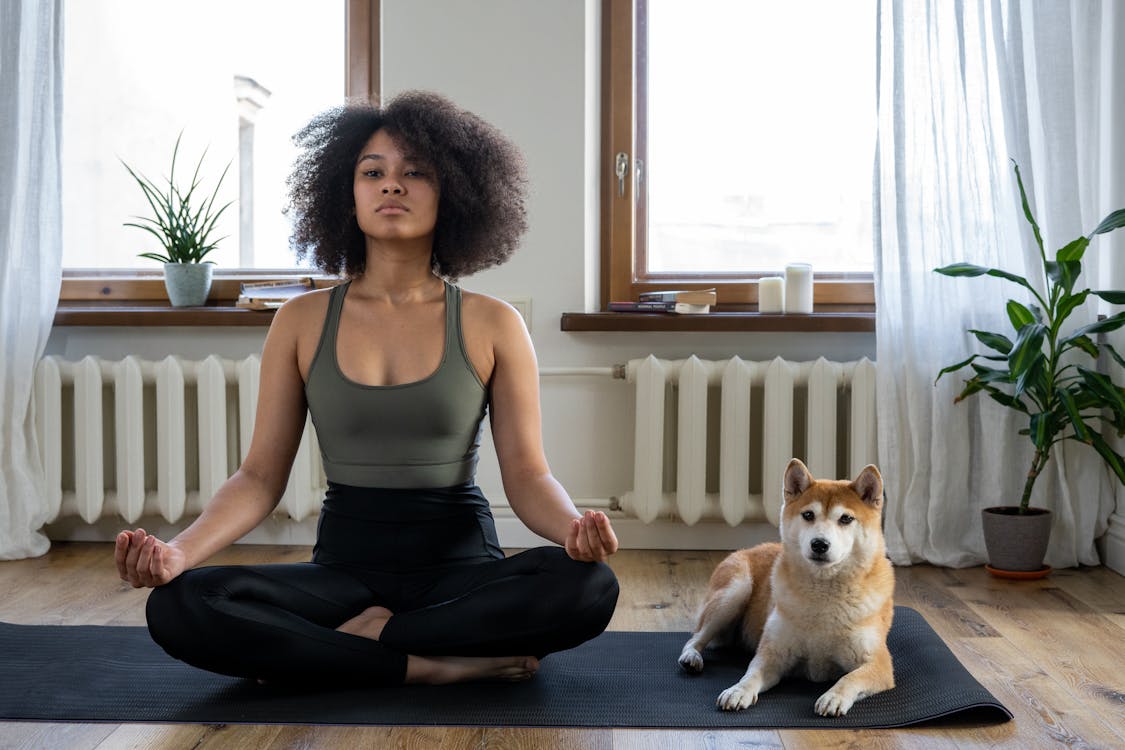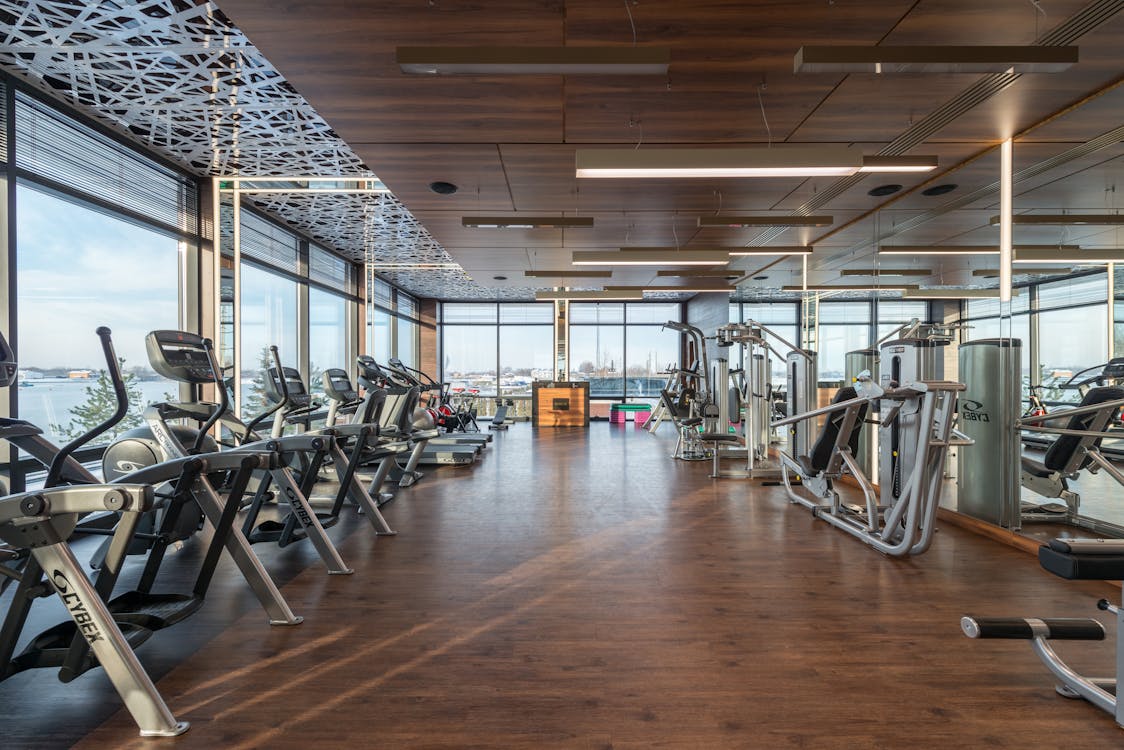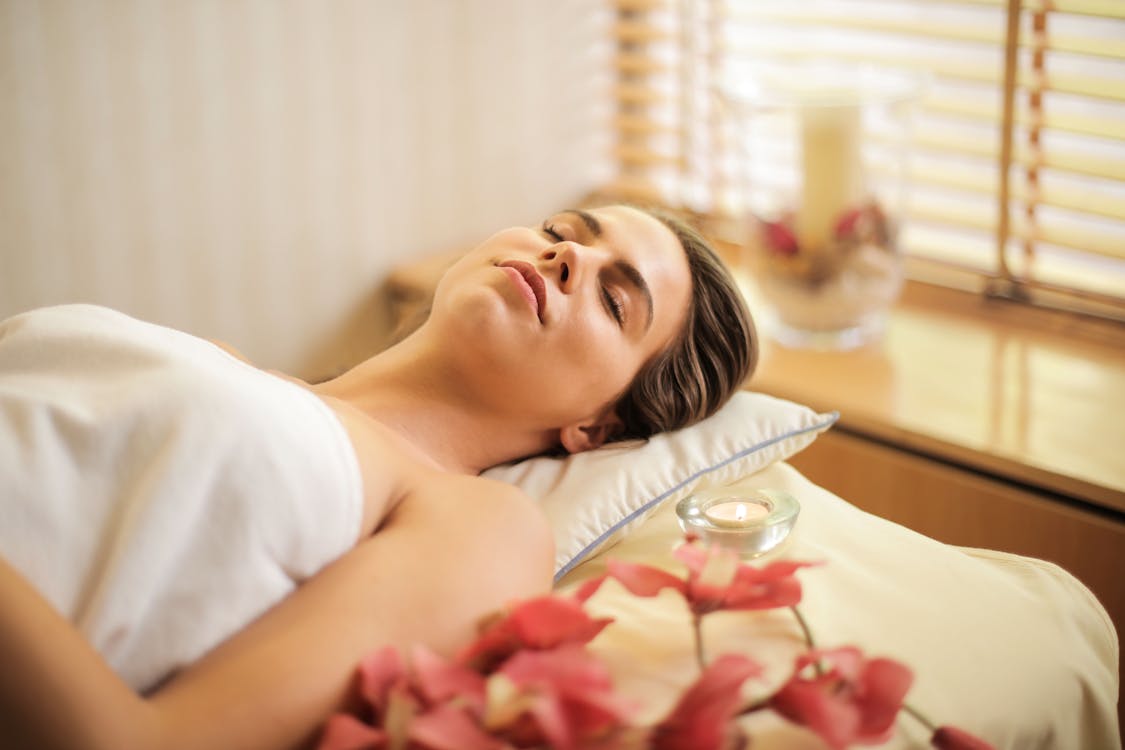Are you looking for a gentle yet powerful way to boost your strength, find your balance, and finally feel more connected to your body? If the thought of complicated workouts or crowded gyms makes you sigh, then you’ve come to the right place. Imagine using something as simple as a wall to unlock a stronger, more flexible, and more confident you. It’s not only possible; it’s what Wall Pilates is all about!
Many of us dream of feeling more energetic and stable in our daily lives, but knowing where to start can be overwhelming. You might feel a little stiff, perhaps your balance isn’t what it used to be, or maybe you just want to build core strength without high-impact routines. That's the beauty of the exercises we're about to explore – inspired by a fantastic, beginner-friendly Wall Pilates session, they prove that you don't need fancy equipment or hours of time to make a real difference to your well-being.

Find your strength and balance using just a wall.
In this guide, we'll walk you through the essentials of getting started with Wall Pilates, focusing on three core-strengthening, balance-boosting, and flexibility-enhancing exercises. Get ready to feel empowered and inspired!
Table of Contents
- What Exactly is Wall Pilates (and Why Is It So Good for You)?
- Getting Started: The Gentle Warm-Up
- Exercise #1: The Mighty Wall Push-Up
- Exercise #2: Graceful Leg Lifts
- Exercise #3: The Enduring Wall Sit
- The Secret Sauce: Core Engagement & Mindful Movement
- Your Top Wall Pilates Questions Answered
- Beyond the Wall: Your Next Step to Holistic Wellness
What Exactly is Wall Pilates (and Why Is It So Good for You)?
Wall Pilates is a fantastic variation of traditional Pilates that, you guessed it, uses a wall as a prop! This simple addition provides support, offers resistance, and helps you maintain proper alignment, making it incredibly beginner-friendly and effective. [33, 42] It’s a low-impact workout, meaning it’s gentle on your joints, which is perfect if you’re new to exercise, recovering from an injury, or simply prefer a kinder approach to fitness. [39, 42]
The benefits are plentiful:
- 💪 **Enhanced Strength:** Targets your upper body, lower body, and especially your core. [29, 33]
- 🤸♀️ **Improved Balance:** The wall provides stability as you challenge your equilibrium. [43]
- 🧘♀️ **Increased Flexibility:** Gentle stretches and controlled movements lengthen your muscles. [29]
- 🧍♀️ **Better Core Stability:** A strong core is the foundation of almost every movement you make, improving posture and reducing back pain. [7, 18, 25, 32, 35]
- ✨ **Accessibility:** Minimal equipment needed – just you, a wall, and comfortable clothes! [33]
Think of the wall as your supportive workout buddy, guiding you through each movement and helping you build confidence along with strength.

Wall Pilates is for everyone, promoting fitness as a joyful, lifelong activity. [1]
Getting Started: The Gentle Warm-Up
Before you meet the wall, it’s crucial to prepare your body. A good warm-up increases blood flow to your muscles, lubricates your joints, and mentally prepares you for exercise, reducing the risk of injury. [15, 16, 22, 27, 36]
Let's follow April and Aiko's lead with a simple, dynamic warm-up:
- Marching in Place: Start with a gentle march, lifting your knees comfortably. Swing your arms naturally. Do this for about 1-2 minutes to get your heart rate up slightly.
- Arm Reaches & Circles: Reach your arms overhead, then out to the sides. Make gentle circles with your arms forward and backward to warm up the shoulder joints.
- Heel Taps: Alternately tap your heels out in front of you, feeling a light stretch in your calves and hamstrings.
Key Insight: A dynamic warm-up, involving movement rather than static holds, is particularly effective for preparing muscles and enhancing performance. [16, 22, 27]
Exercise #1: The Mighty Wall Push-Up
Wall push-ups are an excellent way to build upper body and core strength without the intensity of traditional floor push-ups. They target your chest, shoulders, and triceps. [11, 34]

Engage your core and maintain a straight line from head to heels during Wall Push-Ups. [9, 21, 31, 40]
How to Do It:
- Stand facing a wall, about arm's length away. Place your palms flat on the wall at shoulder height and slightly wider than shoulder-width apart.
- Step your feet back slightly so your body is at a gentle incline. The further back you step, the more challenging it becomes.
- Engage your core! Imagine pulling your belly button gently towards your spine. Your body should form a straight line from your head to your heels.
- Slowly bend your elbows and lean your chest towards the wall, keeping your back straight. Inhale as you lower.
- Exhale and gently push back to the starting position, straightening your arms but not locking your elbows.
- Reps: Aim for 8-12 repetitions.
April's Tip: "Focus on your breath – breathe in as you lower, and out as you push. Keep that core tight!"
Modification for More Challenge: Step your feet further away from the wall to increase the resistance.
Exercise #2: Graceful Leg Lifts
Leg lifts against the wall challenge your lower body (quads, hamstrings, glutes) and your core stability as you work to maintain balance. [4, 11, 26]

Focus on controlled movements and core engagement during leg lifts. [5, 14, 41, 45, 49]
How to Do It:
- Stand with one side of your body lightly touching or very close to the wall for support. You can place a hand gently on the wall if needed.
- Stand tall, engage your core, and keep your shoulders relaxed. Shift your weight slightly onto the leg closest to the wall (your supporting leg).
- Slowly lift your outer leg straight out to the side, only as high as you can while maintaining good form and without leaning your torso. Keep your foot flexed or pointed, as feels comfortable.
- Hold briefly at the top, then slowly lower the leg back to the starting position with control.
- Reps: Aim for 8-10 repetitions on one side, then switch sides and repeat.
April's Tip: "It’s not about how high you lift, but how controlled the movement is. Keep your core engaged to help with balance."
Modification for Beginners: Keep the leg lifts lower, or simply tap your toe out to the side instead of a full lift.
Pro Tip: The The Ultimate 30-Day Holistic Wellness Journey can provide a structured path to build on the strength and balance you develop with these exercises. Check it out!
🔥 READY TO TRANSFORM YOUR ENERGY & WELL-BEING? 🔥
✅ Unlock a Stronger, More Balanced You with The Ultimate 30-Day Holistic Wellness Journey!
🎯 SPECIAL OFFER: Start Today & Receive a Bonus Mindful Movement Guide!
👇 CLICK HERE TO BEGIN YOUR JOURNEY 👇
🛒 GET The Ultimate 30-Day Holistic Wellness Journey NOW & THRIVE! →(Experience noticeable improvements in as little as a few weeks!)
Exercise #3: The Enduring Wall Sit
The wall sit is a fantastic isometric exercise (meaning you hold the position) that primarily builds strength and endurance in your quadriceps (front of thighs), glutes, and core. [29] It also reinforces proper alignment.

Keep your knees over your ankles and back flat against the wall during Wall Sits.
How to Do It:
- Stand with your back flat against a wall.
- Walk your feet out about 1.5 to 2 feet away from the wall, keeping them hip-width apart.
- Slowly slide your back down the wall until your knees are bent at a 90-degree angle, as if you're sitting in an invisible chair. Ensure your knees are directly above your ankles, not drifting past your toes.
- Keep your back and shoulders pressed firmly against the wall. Engage your core.
- Hold: Start with holding for 15-30 seconds. Gradually increase the duration as you get stronger.
- To come out, gently push back up the wall with your legs, or slide down carefully to the floor.
April's Tip: "Make sure your thighs are parallel to the floor for the best engagement. You’ll feel this one!"
Important Note: If you feel any discomfort in your knees, adjust your position – you might need to sit a little higher or ensure your feet are further from the wall. Proper alignment is key! [29]
The Secret Sauce: Core Engagement & Mindful Movement
A recurring theme you'll hear in Pilates, and one emphasized by April, is **core engagement** and **mindful movement**. [7, 18, 25, 32, 35]
Engaging your core isn't about sucking in your stomach; it's about gently drawing your lower abdominal muscles in and up, as if you're zipping up a snug pair of jeans. This supports your spine, improves your posture, and makes every movement more effective and safer. [25]

Mindful movement and controlled breathing enhance the benefits of every exercise. [10, 23, 47, 48, 50]
Mindful movement means paying attention to your body, your breath, and the quality of each exercise. It's not about rushing through reps; it's about control, precision, and connecting your mind to your muscles. This approach, central to Pilates, also fosters relaxation and concentration. [43]
Expert Tip: Many find that using a dedicated solution like The Ultimate 30-Day Holistic Wellness Journey can significantly simplify integrating mindful movement and core principles into a daily routine. It includes guided sessions that reinforce these foundational concepts.
Your Top Wall Pilates Questions Answered
How often should I do Wall Pilates as a beginner?
Aim for 2-3 sessions per week, allowing for rest days in between. This gives your body time to recover and build strength. As you get more comfortable, you can gradually increase the frequency or duration.
Is Wall Pilates really effective for core strength?
Absolutely! Many Wall Pilates exercises inherently engage your deep core muscles to maintain stability and proper form against the wall. Consistent practice can lead to significant improvements in core strength and endurance. [29, 33, 42]
Can I do Wall Pilates if I have knee pain?
Wall Pilates is generally low-impact and can often be modified for knee concerns. Exercises like Wall Sits can actually help strengthen the muscles supporting the knees. [29] However, always listen to your body. If you feel any sharp pain, stop the exercise and consult with a healthcare professional. Modifications, like reducing the depth of a squat or the range of motion in leg lifts, can be very helpful.
Do I need any special equipment for Wall Pilates?
One of the biggest advantages of Wall Pilates is that you need minimal equipment! All you truly need is a clear wall space and comfortable clothing. Some people prefer to use a mat for exercises that might involve lying partially on the floor or for extra cushioning, but it's not strictly necessary for many standing wall exercises. [33]
How is Wall Pilates different from regular Pilates?
Wall Pilates uses a wall as a prop for support, resistance, and feedback on your alignment. This can make it more accessible for beginners or those with balance concerns. [42, 43] Regular mat Pilates relies solely on your body weight and control, while Reformer Pilates uses a specialized machine with springs for resistance.
Beyond the Wall: Your Next Step to Holistic Wellness
Mastering these Wall Pilates basics is a fantastic achievement and a wonderful step towards a healthier, more vibrant you! As April and her mom beautifully demonstrate, fitness can be an enjoyable, shared experience that builds not just physical strength, but also a positive mindset. [1]
These exercises lay a great foundation. When you're ready to expand this feeling of well-being into other areas of your life – like nutrition, mindfulness, and sustainable healthy habits – a guided approach can make all the difference. [2, 3, 6, 8, 12, 17, 19, 24, 30, 38]
This is where The Ultimate 30-Day Holistic Wellness Journey comes in. It’s designed to take the momentum you build from workouts like these and channel it into a comprehensive plan for your overall health, covering mind, body, and spirit. It helps you move from "I should get healthier" to "I AM healthier, and I know how to sustain it!"
Ready to take these foundational movements and integrate them into a complete lifestyle transformation?
Explore How The Ultimate 30-Day Holistic Wellness Journey Helps →Conclusion: Your Wall, Your Strength, Your Journey!
Starting a new fitness routine doesn't have to be complicated or intimidating. With just a wall and a willingness to move, you can significantly improve your strength, balance, flexibility, and core stability. Remember the key principles: warm up properly, focus on good form, engage your core, breathe deeply, and listen to your body. [29, 33]
This Wall Pilates routine is more than just exercise; it's an invitation to connect with your body, build confidence, and perhaps even inspire others, just as April and Aiko do. Take these simple yet powerful movements and make them your own. And when you're ready to expand your wellness horizons, remember that supportive journeys are available to guide you every step of the way.
Further Exploration & Authoritative Perspectives
To deepen your understanding of Pilates and related wellness principles, these resources offer excellent information:
For comprehensive information on the benefits of physical activity and exercise guidelines for various age groups, the World Health Organization (WHO) offers global recommendations and fact sheets.
To explore the science behind core stability and its impact on overall health and injury prevention, the National Strength and Conditioning Association (NSCA) provides research and resources for both professionals and enthusiasts. [22]
For insights into mindful movement, flexibility, and holistic approaches to exercise, ACE Fitness (American Council on Exercise) has a wealth of articles and guides. [16, 35]
To understand the broader concepts of holistic health and well-being, including the interplay of physical, mental, and emotional health, National Institutes of Health (NIH) offers valuable resources and research. [30]
🌟 FEELING INSPIRED? TAKE THE NEXT STEP! 🌟
✅ Continue Your Transformation with The Ultimate 30-Day Holistic Wellness Journey!
🎯 LIMITED TIME: Exclusive Access to our Supportive Community + Bonus Meal Plans!
👇 EMBRACE YOUR BEST SELF - CLICK HERE! 👇
🛒 START The Ultimate 30-Day Holistic Wellness Journey TODAY! →(Your journey to total well-being starts now!)
Suggested Labels: Wall Pilates, Beginner Pilates, Home Workout, Core Strength, Balance Exercises, Flexibility, Low-Impact Exercise, Holistic Wellness, Fitness for Beginners, The Ultimate 30-Day Holistic Wellness Journey
